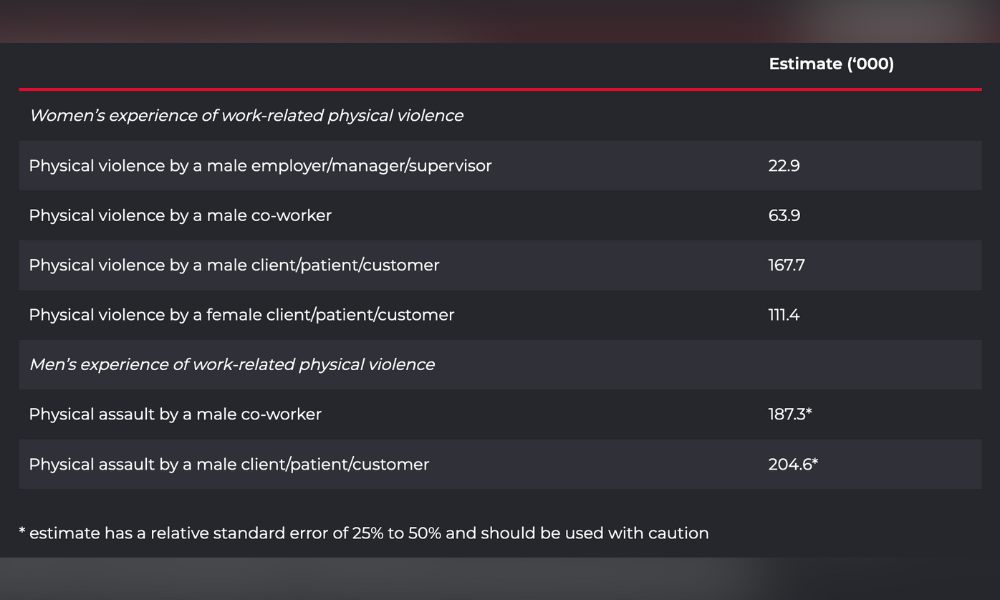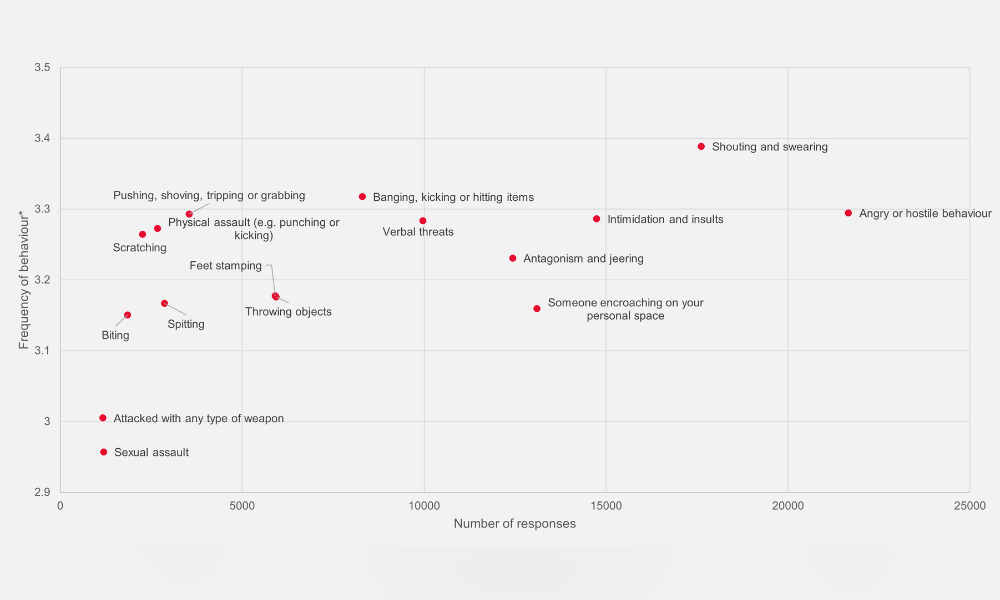
Clients, customers most common source of problem, analysis reveals

Serious compensation claims for assault and violence in the workplace spiked by 56% over the last five years, indicating an upward trend of workplace violence and aggression.
This is according to the latest analysis from Safe Work Australia, which looked at the data from the ABS Personal Safety Survey, People at Work Survey, and the National Dataset for Compensation-based Statistics.
"From 2017-18 to 2021-22p, there was a distinct 56% increase in the number of serious workers' compensation claims (involving at least one week away from work) for workplace violence and assault," the report found.

Source: Safe Work Australia
It further revealed a total of 12,721 accepted claims for exposure to workplace or occupational violence over the last decade, with a significant surge observed for claims from women compared to men.
According to the report, there was a 73% increase in claims made by women compared to the 33% increase in claims made by men in the last 10 years.
"More research is required to uncover the factors behind these trends, which may include the quality of workplace control measures to manage exposures to violence and aggression, access to workers' compensation, propensity to make a claim, the type or frequency of violence experienced, the injury severity, support from employers following the exposure, and the interaction with other psychosocial hazards," the report stated.
"It is equally important to consider the underlying structural features and hazards profile that give rise to the disproportionate impact on certain workers."
The report also revealed that clients and customers were the most common source of work-related violence.
"Employers and PCBUs should be talking to workers about these hazards and implementing effective and reliable control measures to prevent and respond to violence and aggression by others at the workplace," the report said.

Source: Safe Work Australia
For the most common behaviours of violence in the workplace, they include angry or hostile behaviour, shouting and swearing, as well as intimidation and insults, according to the report.

Source: Safe Work Australia
"Though these harmful behaviours are of lower severity than other violent behaviours, they can still represent significant workplace risks to workers, particularly if they are prolonged or frequent," it said.
Among the most common injuries incurred by employees exposed to workplace or occupational violence include mental health conditions, traumatic injuries to joints or muscles, as well as wounds, lacerations, amputations, and internal organ damage.
According to the report, a high proportion of women who have experienced violence reported feelings of anxiety or fear for personal safety in the 12 months following the incident.
"More evidence is required to understand if these trends extend to workplace incidents," the report stated. "However, it suggests that this is important for PCBUs to consider when managing both the impacts of violent incidents in their workplaces and how these hazards are identified where they may be hidden in the workplace."